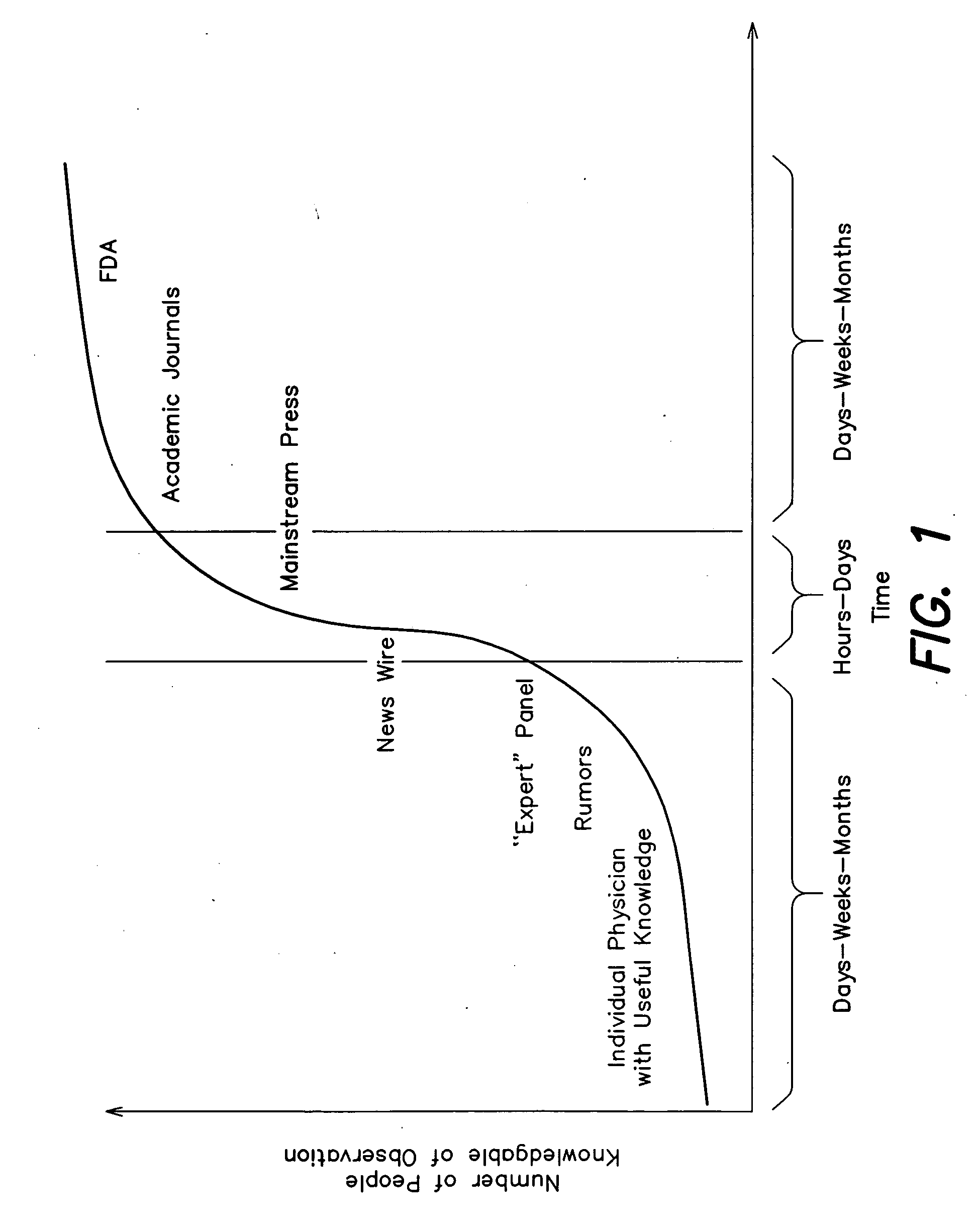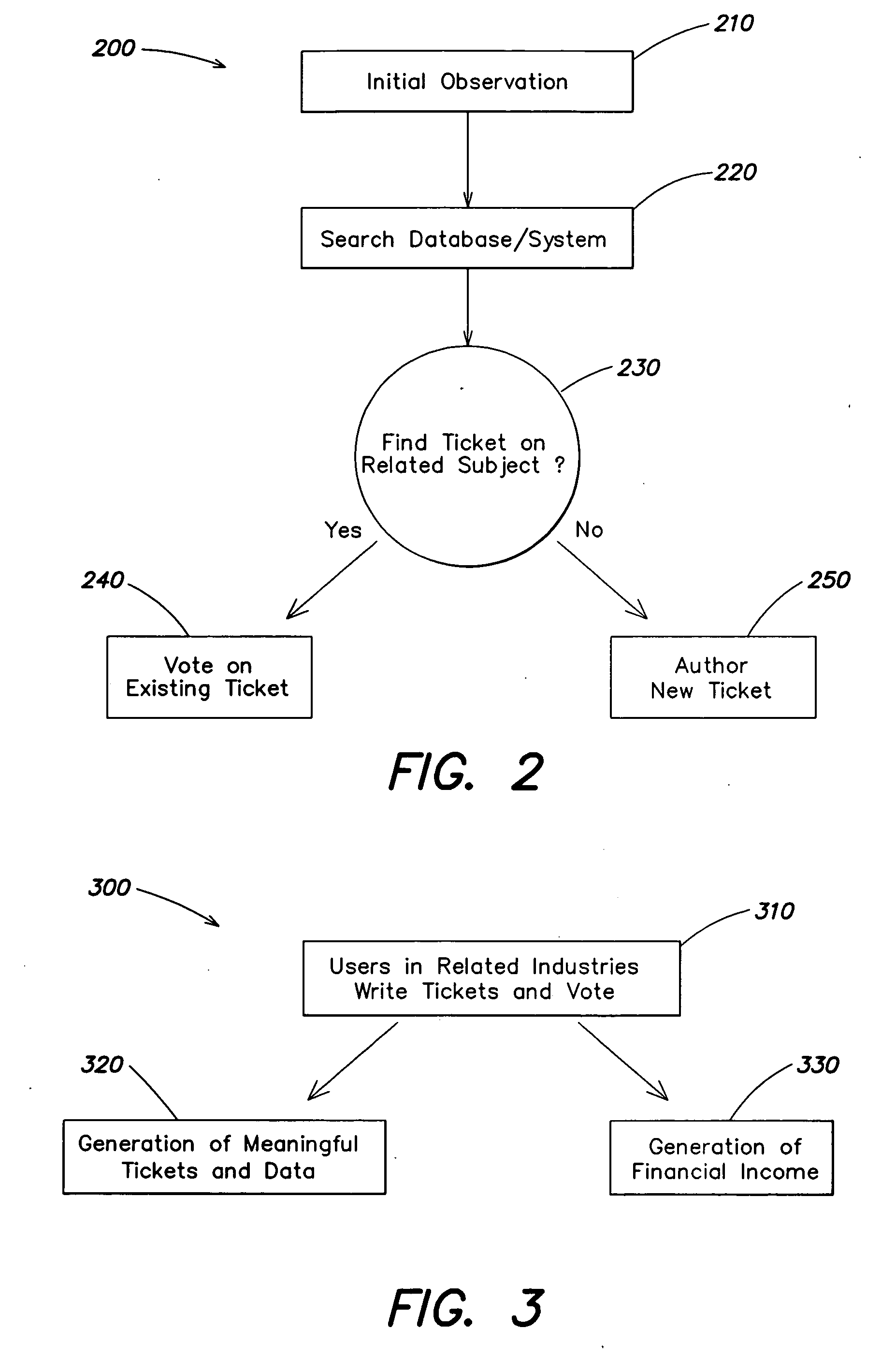Method and apparatus for conducting an information brokering service
a technology of information brokering and information technology, applied in the field of online information systems, can solve the problems of insufficient determination of conventional social networking systems or other online communities, inability to distinguish quality data from noise, and insufficient incentive for experts to contribute quality information
- Summary
- Abstract
- Description
- Claims
- Application Information
AI Technical Summary
Benefits of technology
Problems solved by technology
Method used
Image
Examples
example ecosystem
[0093] In one example implementation, a system is provided that permits a user to perform a number of actions relating to observations or opinions submitted by users. In one particular embodiment, the user may submit observations or vote on existing observations. In one example implementation, the observation may be represented in the system in the form of a “ticket.” In the example, the ticket is a construct that permits an idea to be shared and viewed by other users as well as allowing the system to track the idea as it progresses through the ecosystem.
[0094] A user may create an observation by creating a ticket that describes the observation. In one example, the ticket includes a number of parameters including a description of the observation as entered by a user (e.g., in the form of text and / or phrases describing the observation). In one example, the length of description of the observation associated with the ticket may be any length (e.g., no minimum or maximum length). In o...
example process
[0107]FIG. 2 is a flowchart showing an example process 200 for interacting with an ecosystem according to one embodiment of the present invention. In one example, the ecosystem may include one or more computers and / or communication systems used to communicate information between users. A user may have an initial observation, insight or idea (e.g., at block 210). At block 220, the user logs onto the system and uses an interface of the system (e.g., a web-based search engine or similar interface) to search and verify whether the observation, insight or idea does not already exist. In one embodiment, the user may be required to join the ecosystem (e.g., have a uniquely-identifiable identity such as a username / password) in order to create tickets and / or vote.
[0108] The user may be permitted to create a ticket according to the initial observation, and submit the ticket to the system. The system (and / or the user) may search existing tickets to determine whether there is a ticket on a rel...
example implementations
[0182]FIG. 9A is a block diagram showing an example creation of a ticket creation and tagging process according to one embodiment of the present invention. At block 901, a user (e.g., a physician or other person that has an observation or prediction) authors a ticket (e.g., on a client system 807A-807D of FIG. 8) for submission to the ecosystem (e.g., in the form of a distributed computer system 800). At block 902, the ticket is validated where it can be verified that the ticket is an original concept, is not similar to other tickets, etc. Further, the ticket may be analyzed in order to provide one or more classifications (e.g., tags) for the observations that may be associated with the ticket. Such tag information may be used to determine an initial value of the ticket, based on the related subject matter (e.g., an event related to a pacemaker vs. a general health event).
[0183] In one embodiment, tags may initially be provided by the author of the ticket. Further, in another examp...
PUM
 Login to View More
Login to View More Abstract
Description
Claims
Application Information
 Login to View More
Login to View More - R&D
- Intellectual Property
- Life Sciences
- Materials
- Tech Scout
- Unparalleled Data Quality
- Higher Quality Content
- 60% Fewer Hallucinations
Browse by: Latest US Patents, China's latest patents, Technical Efficacy Thesaurus, Application Domain, Technology Topic, Popular Technical Reports.
© 2025 PatSnap. All rights reserved.Legal|Privacy policy|Modern Slavery Act Transparency Statement|Sitemap|About US| Contact US: help@patsnap.com



